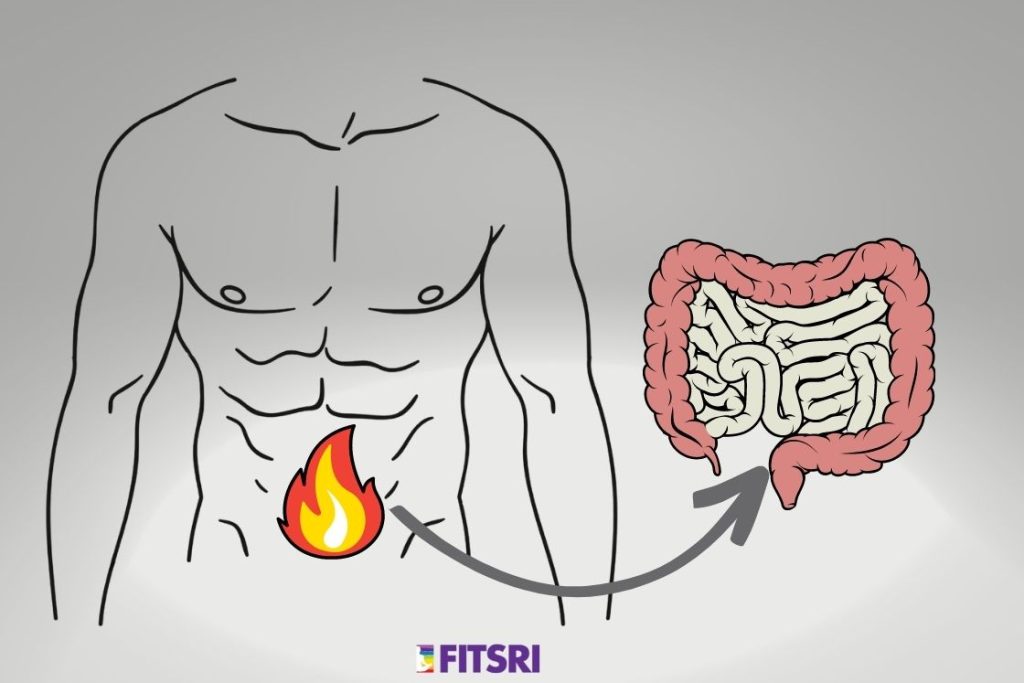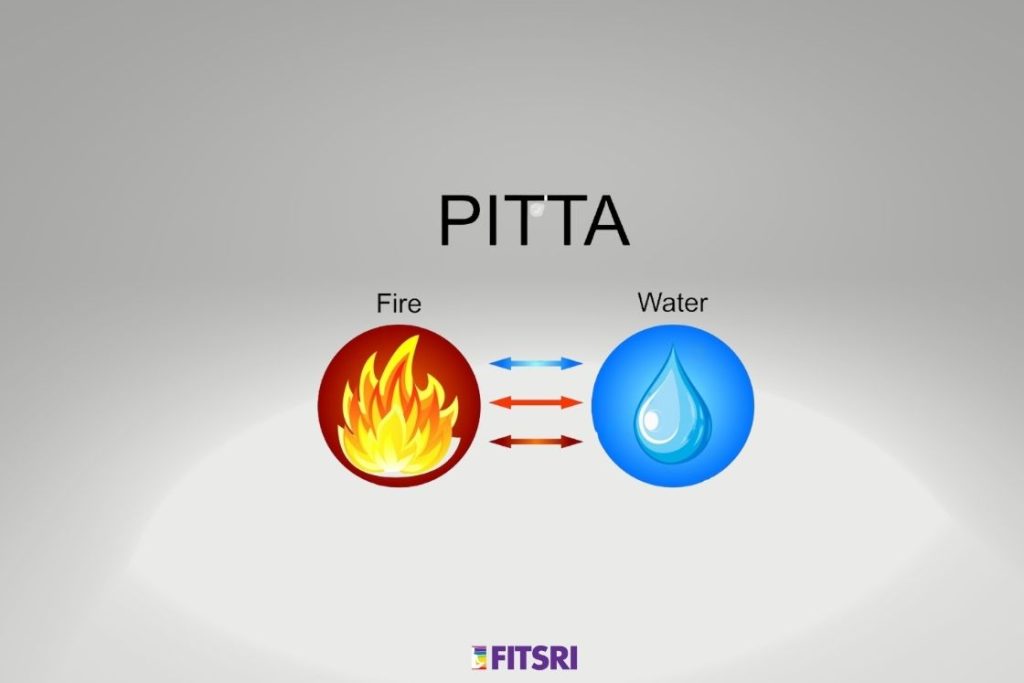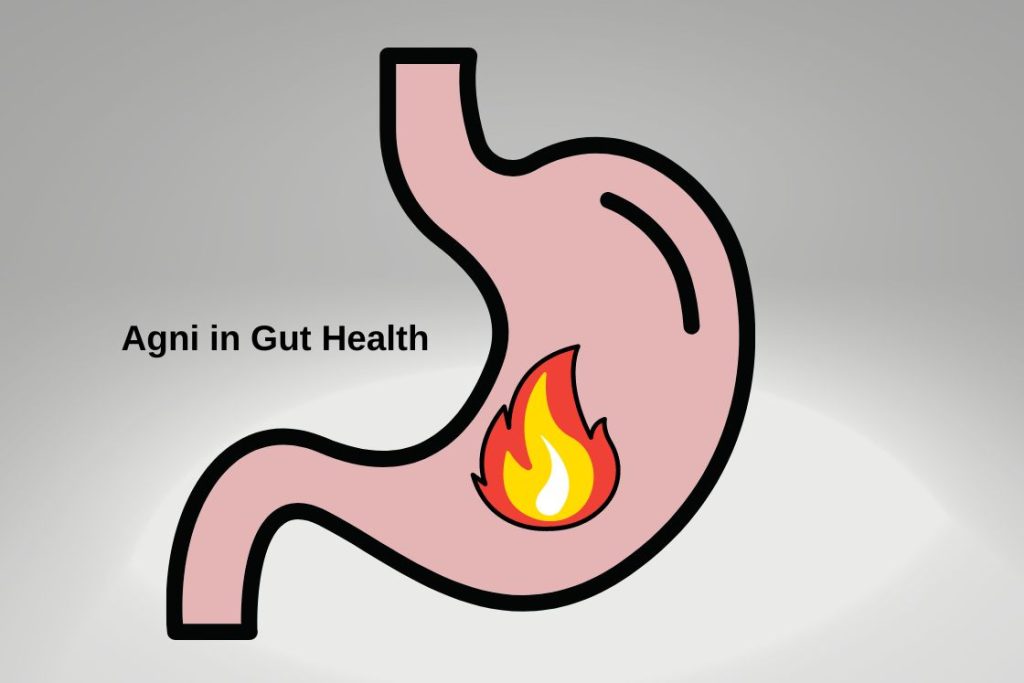
[ad_1]

Ayurveda, a time-tested system of medication originating in India, focuses on attaining steadiness within the physique and thoughts. It promotes holistic well being by contemplating the interaction of bodily techniques, the exterior surroundings, and emotional well-being. One among its central ideas is Agni.
Agni, a cornerstone of Ayurveda, is deeply rooted in historical Indian medicinal texts. It’s considered a transformative power throughout the holistic well being framework of Ayurveda, balancing the thoughts and physique. Ayurvedic sages and practitioners traditionally positioned paramount significance on Agni, viewing it as a bridge between the bodily and delicate physique and the encompassing surroundings.
What’s Agni? | Agni because the ‘Digestive Hearth’
Agni, instantly translated, means “hearth” in Sanskrit. Within the Ayurvedic context, it refers back to the physique’s digestive and metabolic energy. It performs a central position in processing the meals we eat, changing it into vitality, and guaranteeing vitamins attain each cell. When Agni features optimally, digestion turns into environment friendly, and metabolic processes stay balanced.
Furthermore, intestine well being extends past simply digesting meals. A wholesome intestine varieties the inspiration of total well-being, influencing every thing from immunity to temper. By recognizing and nurturing Agni, we are able to assist our intestine to perform as an ally, fostering well being and vitality.
The multifaceted significance of Agni in ayurveda:
The affect of Agni goes far past digestion. Its effectivity and steadiness have an effect on a variety of bodily features and features of well-being:
- Bala (Power): A sturdy Agni contributes to bodily vigor and endurance.
- Varna (Color): It influences pores and skin readability and hue, reflecting total well being.
- Swasthya (Well being): Correct functioning of Agni ensures holistic well being and retains diseases at bay.
- Utsaha (Enthusiasm): When Agni features harmoniously, it nurtures a optimistic mindset and enthusiasm for all times’s endeavors.
- Upacaya (Improvement of the physique): Agni aids within the total progress and improvement of bodily tissues.
- Prabha (Complexion): It performs a job in giving the pores and skin its radiance and glow.
- Ojas (Vitality): Usually thought-about the essence of well being in Ayurveda, Ojas is bolstered by a balanced Agni.
- Tejas (Valour): Agni fuels braveness and dedication, enabling people to face challenges head-on.
- Vaya (Getting old): A harmonized Agni slows down untimely growing older, supporting longevity.
- Ayu (Lifespan): The general lifespan, in response to Ayurveda, is influenced by the state of 1’s Agni, highlighting its essential position in well being and longevity.
Pitta & agni in ayurveda: An intertwined relationship

In Ayurveda, there are three main doshas, or energies: Vata, Pitta and Kapha. Amongst them, Pitta is intently related to warmth and transformation. Agni, the power behind digestion and metabolism, is an important side of Pitta. Consider Pitta because the overarching vitality that governs warmth, transformation, and metabolism within the physique, whereas Agni is the particular agent accountable for digesting meals and absorbing vitamins. Thus, understanding and balancing Pitta is essential for sustaining wholesome Agni.
Know your Physique Sort: Be a part of our 5 Day Ayurveda Workshop
The 13 kinds of Agni in ayurveda

Jatharagni – The Major Digestive Hearth:
That is the primary Agni that operates within the abdomen and intestines, accountable for digesting meals we eat. Relying on its state, at a given second the Agni in your digestive tract, or Jatharagni, may be both of the 4 sorts:
- Vishamagni: The sort of Agni is erratic or irregular. On some days, you would possibly really feel extraordinarily hungry, and on others, you might need little to no urge for food. This will result in digestive points like gasoline or constipation.
- Tikshagni: That is an overactive digestive hearth. When you’ve got Tikshagni, it’s possible you’ll continuously really feel hungry and would possibly digest meals rapidly, however this will generally result in irritation or hyperacidity.
- Mandagni: A sluggish and sluggish digestive hearth. With Mandagni, the meals isn’t digested correctly or in a well timed method, usually resulting in indigestion or weight achieve.
- Samagni: The best state of digestion. It represents a balanced digestive hearth, the place the meals is processed effectively, resulting in correct absorption of vitamins.
Bhutagni – The Elemental Agnis:
These are related to every of the 5 elementary components (Panchamahabhutas) that make up every thing within the universe, together with our our bodies.
Parthiva Agni: Associated to the Earth aspect, it helps in processing stable particles of meals.
Apya Agni: Governs the Water aspect, it aids in metabolizing liquids.
Tejas Agni: Linked to the Hearth aspect, it’s essential in digestion and offering heat to our physique.
Vayavya Agni: Linked to the Air aspect, it performs a job in gasoline change and respiratory.
Nabhasa Agni: Related to the Ether/Area aspect, it is perhaps a bit summary however consider it as managing hole areas and channels within the physique.
Dhatvagni – Agnis of the Physique Tissues:
The human physique, in response to Ayurveda, consists of seven main tissues. Every tissue has its personal Agni accountable for its metabolism:
- Rasagni: Operates within the Rasa Dhatu, or plasma. It’s important for nutrient distribution all through the physique.
- Raktagni: Governs the Rakta Dhatu or blood tissue. It ensures that oxygen and vitamins are delivered to each cell.
- Mamsagni: Works within the Mamsa Dhatu, the muscle tissue. It’s necessary for muscle well being, restore, and progress.
- Medagni: Features within the Meda Dhatu, or fats tissue. It regulates lipid metabolism, guaranteeing a steadiness between fats storage and utilization.
- Asthyagni: Operates within the Asthi Dhatu, the bone tissue. It performs an important position in bone well being, density, and regeneration.
- Majjagni: Works within the Majja Dhatu, the bone marrow and nerve tissue. It aids in producing new blood cells and sustaining nervous system well being.
- Shukragni: Operates within the Shukra Dhatu, or reproductive tissue. It performs an element in fertility, vitality, and total reproductive well being.
In essence, these 13 Agnis collectively be sure that each a part of our meals is digested and each a part of our physique is nourished. Understanding them offers insights into our distinctive physique structure, serving to us cater to our private well being wants extra successfully.
The position of Agni in intestine well being

Intestine well being, usually thought-about a mirror to 1’s total well-being, has a central participant within the Ayurvedic framework: Agni. However what precisely does Agni need to do with the intricate workings of our digestive system? Let’s break it down.
1. Agni’s activity of meals breakdown and nutrient absorption
At its core, Agni is our physique’s inside mechanism for digesting meals and extracting the important vitamins. Consider it as a furnace that processes what we eat. When Agni features successfully, our meals is damaged down effectively, and all of the important vitamins are seamlessly absorbed into our system, guaranteeing we’re energized and nourished.
2. The perils of an imbalanced agni and the emergence of ama
Now, think about what occurs if the furnace isn’t working accurately. Inefficient burning results in remnants. In Ayurveda, this residue from incompletely digested meals is termed “Ama.” Ama is likened to a poisonous byproduct that accumulates within the physique. Over time, this build-up can impede our physiological pathways, main to varied well being points, from bloating and gasoline to extra extreme digestive issues. It’s not nearly feeling heavy after a meal; it’s concerning the long-term implications of carrying round these toxins.
3. Ayurveda Agni, intestine flora, and total intestine well being
The trendy understanding of intestine well being locations important emphasis on intestine flora, the neighborhood of helpful micro organism residing in our intestines. These microorganisms play a pivotal position in digestion, nutrient absorption, and immune perform. Agni and intestine flora are intertwined of their missions. A sturdy Agni helps a wholesome intestine surroundings, guaranteeing these helpful micro organism thrive. In distinction, a weakened Agni can disrupt this concord, probably resulting in imbalances within the intestine flora, additional exacerbating digestive points.
In essence, Agni’s position in intestine well being is profound. It’s not only a background participant; it’s on the forefront, figuring out how we course of our meals, how we take in vitamins, and the way we preserve a balanced intestine surroundings. Guaranteeing Agni is in optimum situation is paramount for these aiming for holistic intestine well being and, by extension, total well-being.
Agni in ayurveda and metabolism
Metabolism, a time period you would possibly usually hear in discussions about weight or vitality ranges, has a parallel on the planet of Ayurveda often known as Agni. Let’s delve deeper into this connection.
1. Metabolism: A twin perspective
Within the Western context, metabolism is broadly described because the chemical processes inside our our bodies that convert meals into vitality, important for duties like respiratory, pondering, and bodily exercise. Alternatively, Ayurveda introduces us to Agni as not only a course of, however an entity. Agni governs digestion, assimilation, and transformation of meals and experiences into vitality or consciousness. Whereas each views would possibly sound distinct, they converge on a shared precept: the transformation of what we consumption into vitality.
2. Agni’s affect on metabolic fee and vitality manufacturing
Agni is the driving power behind how swiftly and effectively our physique processes what we eat. A sturdy and energetic Agni means our metabolic fee is in good gear, guaranteeing that meals is promptly transformed to vitality. In less complicated phrases, if Agni is in tip-top situation, our our bodies are higher outfitted to supply vitality and preserve vitality.
3. The domino impact of imbalanced Agni
When Agni is out of steadiness, it’s not simply an remoted concern. An imbalanced Agni can decelerate our metabolic fee, resulting in inefficient vitality manufacturing. This sluggishness may end up in weight achieve or challenges in weight administration. Past weight, a disrupted Agni can go away people feeling perpetually drained, missing the vitality to go about their day-to-day duties. The ripple results of an impaired Agni contact varied features of well being, underscoring the significance of sustaining its steadiness for total well-being.
To place it succinctly, Agni’s relevance in our metabolic processes is immense. It’s the linchpin that determines how we make the most of our meals, how we handle our weight, and the way energized we really feel. Recognizing and respecting its position is a step in direction of holistic well being and wellness.
Indicators of balanced and imbalanced Agni in ayurveda
Up to now we’ve mentioned how Agni, the inner digestive hearth, influences our well being at its very core. However how can one discern if their Agni is harmoniously burning or has gone astray? Let’s decode the indicators.
1. Hallmarks of harmonious Agni
When your Agni is in sync, it reveals itself by way of:
- Constant Digestion: Meals are digested with out bouts of bloating, gasoline, or indigestion.
- Regular Vitality Ranges: You are feeling energetically secure all through the day, devoid of dramatic slumps.
- Clear Complexion: Your pores and skin reveals a pure glow, with out frequent breakouts or pallor.
- Optimum Elimination: Day by day bowel actions are common and unstrained.
- Psychological Readability: There’s an absence of foggy-headedness, permitting for clear thought processes.
2. Crimson flags of disrupted Agni
On the flip aspect, an Agni that’s out of steadiness can manifest as:
- Irregular Digestion: Episodes of heartburn, bloating, or constipation turn into frequent guests.
- Fluctuating Vitality: You would possibly expertise surges of vitality adopted by intense fatigue.
- Unexplained Weight Modifications: Both unanticipated weight achieve or unexplained weight reduction would possibly happen.
- Temper Swings: Emotions of irritability, anxiousness, or common moodiness would possibly prevail.
- Style Disturbances: A recurring dangerous style within the mouth or lack of style may be indicative.
3. Broader implications of agni imbalances
Past these speedy indicators, a long-term imbalanced Agni doesn’t merely keep confined to digestive points. It may possibly pave the best way for:
- Weakened Immunity: Elevated susceptibility to infections and diseases.
- Persistent Situations: Persistent imbalances can result in illnesses like irritable bowel syndrome, diabetes, or pores and skin issues.
- Psychological Well being Considerations: Points equivalent to melancholy or anxiousness may be exacerbated or triggered by extended Agni disruptions.
In essence, the state of our Agni offers a window into our holistic well being. Recognizing its indicators, each harmonious and disruptive, is important. By understanding these indicators, one can take proactive steps to nurture their Agni, laying the groundwork for complete well-being.
Tricks to steadiness and strengthen Agni
A balanced Agni is synonymous with optimum well being in Ayurveda. For these looking for to tune their inside digestive hearth to its prime, listed below are actionable suggestions rooted in historical knowledge and up to date understanding.
1. Dietary suggestions
- Heat and Cooked Meals: Favor heat, cooked meals over chilly or uncooked objects. This eases the digestion course of, serving to Agni perform effectively.
- Keep away from Overeating: Hearken to your physique’s cues. Cease consuming whenever you’re about three-quarters full to keep away from overwhelming your Agni.
- Restrict Processed Meals: Go for entire, pure meals, steering away from overly processed or synthetic objects which might dampen Agni.
2. Way of life practices
- Common Meal Timings: Stick with a constant consuming schedule. This trains your Agni to anticipate and put together for digestion.
- Morning Routine: Beginning the day with a glass of heat water can ignite the Agni, prepping it for the day’s meals.
- Meditation: Incorporating meditation may help in decreasing stress, which, in flip, helps a balanced Agni.
- Bodily Exercise: Common train, particularly within the early morning, can stoke your Agni, guaranteeing environment friendly digestion.
3. Ayurvedic boosters for agni
- Trikatu: A mix of black pepper, lengthy pepper, and ginger, Trikatu is famend for its Agni-enhancing properties.
- Ginger: Consuming a small piece of recent ginger with a pinch of salt earlier than meals can rev up your digestive hearth.
- Ayurvedic Therapies: Remedies like Abhyanga (oil therapeutic massage) may also assist in balancing and strengthening Agni.
4. The essence of conscious consuming
- Acutely aware Consumption: Take note of what you eat. Relish every chunk, recognizing the flavors and textures. This aware method aids digestion.
- Restrict Distractions: Consuming with out the interference of screens or intense discussions permits the physique to focus solely on the act of digestion.
- Tune Into Starvation Cues: Perceive the distinction between emotional consuming and real starvation. Responding precisely to those indicators ensures that Agni features at its finest.
5. The way to management Tikshna Agni, or Tikshagni
- Cooling Meals: Incorporate meals which have cooling properties, like cucumbers, dairy merchandise (significantly ghee and milk), and leafy greens.
- Restrict Spicy Meals: Cut back the consumption of overly spicy or tangy meals. These can stir up Tikshagni.
- Keep Hydrated: Ingesting ample water is essential. Nonetheless, keep away from extreme water consumption throughout meals, as it could dilute digestive enzymes.
- Common Meal Occasions: Stick with common meal occasions and keep away from skipping meals.
- Keep Cool: Bodily cooling down, equivalent to avoiding direct daylight or warmth and never overexerting oneself, can help in managing Tikshagni.
- Amla: Recognized for its cooling impact, amla or Indian gooseberry may help steadiness Tikshagni.
- Coriander Water: Soak coriander seeds in water in a single day. Drink this water within the morning to calm the digestive system.
- Keep away from Stimulants: Cut back or remove consumption of tobacco, caffeine, and alcohol as they will irritate Tikshagni.
6. Mandagni therapy in ayurveda
- Heat Meals: Go for heat, cooked meals reasonably than chilly or uncooked meals.
- Embody Spices: Spices like ginger, black pepper, and cumin may help ignite the digestive hearth. A pinch of ginger and a splash of lime earlier than meals may be helpful.
- Keep away from Heavy Meals: Cut back the consumption of meals which are troublesome to digest, like fried meals, pink meat, or overly wealthy dishes.
- Bodily Exercise: A light-weight train routine, together with a morning or night stroll, may help stimulate digestion.
- Stomach Massages: Mild massages utilizing heat sesame oil can promote higher digestion.
- Heat Water: Ingesting heat water all through the day may help elevate Mandagni and facilitate digestion.
The connection between Agni, intestine well being, and immunity
Our intestine is just not merely an organ system that processes meals. Fashionable science, paired with historical Ayurvedic knowledge, sheds mild on its profound affect on total well being, significantly immunity. Let’s discover this intricate connection.
1. The Intestine: Greater than digestion
- Second Mind Dynamics: The intestine, sometimes called the physique’s ‘second mind,’ homes tens of millions of nerve cells. These not solely orchestrate digestion but additionally talk with our mind, affecting temper and cognition.
- Immunity’s Command Middle: A staggering 70% of our immune cells reside within the intestine. This makes the intestine a frontline defender in opposition to pathogens, guaranteeing that dangerous entities don’t breach our physique’s defenses.
2. Agni: The torchbearer of immunity
- Digestion and Past: A robust Agni ensures environment friendly digestion, decreasing the prospect of undigested meals particles turning into toxins that may hinder immunity.
- Barrier Upkeep: Agni aids in sustaining the integrity of the intestine lining. A sturdy lining prevents undesirable particles from getting into the bloodstream, an important side of immune protection.
- Concord within the Intestine: Correctly balanced Agni fosters a conducive surroundings for helpful intestine micro organism. These microbes play a pivotal position in immune responses.
3. Ayurveda’s Intestine-Centric well being viewpoint
- Basis of Wellness: Ayurveda has lengthy held the assumption that intestine well being is the cornerstone of total well-being. An imbalanced digestive system, as per Ayurveda, may be the basis explanation for many illnesses.
- Holistic Strategy: Not like the compartmentalized view of well being in some traditions, Ayurveda emphasizes the interconnectedness of techniques. The intestine isn’t an remoted unit however an integral a part of the physique’s intricate net.
- Agni’s Central Function: In Ayurvedic teachings, nurturing Agni is synonymous with fostering well being. It’s not nearly meals digestion however about processing feelings, experiences, and energies successfully.
Drawing from each time-tested Ayurvedic ideas and up to date scientific insights, it turns into clear that our intestine, ruled by the would possibly of Agni, is a powerhouse influencing immunity. Prioritizing intestine well being and a balanced Agni may be transformative, not only for digestion however for holistic well-being.
To Conclude
Navigating the intricate tapestry of Ayurvedic knowledge, our exploration into the realm of Agni has make clear its profound significance. Greater than only a idea, Agni stands because the sentinel governing our intestine well being, metabolism, and by extension, our total vitality.
- Past Digestion: Whereas Agni performs a pivotal position in breaking down our meals, its affect transcends digestion. It shapes our metabolic processes, guaranteeing that our physique effectively harnesses vitality from what we eat.
- Guardian of Intestine and Immunity: An optimized Agni acts as a guardian, guaranteeing the well being of our intestine—an important participant in our immune responses. Thus, by nurturing Agni, we not directly fortify our defenses in opposition to potential well being adversaries.
Ayurveda, with its millennia-old insights, gives a holistic method to well being. It doesn’t simply goal signs however seeks to deal with root causes, fostering holistic well-being. Adopting Ayurvedic ideas needn’t be an overhaul of 1’s life-style. Easy, incremental adjustments—like being conscious of 1’s food regimen or recognizing the significance of Agni—can yield transformative outcomes.
To navigate the ebb and movement of life with vitality, understanding and cherishing our Agni is paramount. As we shut this chapter, let’s carry ahead the essence of what we’ve discovered, intertwining Ayurvedic insights into our every day lives, paving the trail for a harmonious existence.
FAQs on Agni in Ayurveda
1. What are the qualities of Agni in ayurveda?
In Ayurveda, Agni embodies qualities equivalent to heat, transformation, and light-weight. It represents the important power behind digestion and metabolism, accountable for changing meals and different inputs into vitality and sustenance for the physique.
2. What chakra is Agni?
Agni is primarily related to the Manipura Chakra, also referred to as the Photo voltaic Plexus Chakra. Situated within the navel area, this chakra governs private energy, will, and digestion, aligning with the transformative qualities of Agni.
3. How do I activate Agni?
Activating Agni includes a mix of dietary, life-style, and conscious practices. Consuming heat, cooked meals, sipping heat water all through the day, and incorporating spices like ginger and black pepper may help. Common bodily exercise, meditation, and sustaining a constant meal routine additionally contribute to a vibrant Agni.
4. What’s the distinction between Pitta and Agni?
Agni pertains to the digestive and metabolic hearth, accountable for the transformation processes within the physique. Pitta, then again, is without doubt one of the three doshas (body-mind constitutions) in Ayurveda, representing the hearth and water components. Whereas Pitta governs digestion, metabolism, and temperature, Agni is the useful entity behind these processes. Consider Pitta because the overseer and Agni because the employee executing the duties.
5. Why is my Agni weak?
A weak Agni could be a results of a number of components. Consuming incompatible meals mixtures, overeating, consuming too many chilly or processed meals, and main a sedentary life-style can diminish Agni. Moreover, emotional stress and irregular consuming habits may also impression its efficiency.
6. Which finger represents Agni?
In conventional hand mudras and Ayurveda, the ring finger is related to the Agni or hearth aspect. Numerous hand gestures or mudras utilizing the ring finger may be utilized to manage the hearth aspect throughout the physique.
7. How do you retain Agni robust?
To take care of a powerful Agni, one ought to adhere to common meal timings, eat a balanced food regimen with heat and simply digestible meals, and incorporate digestive spices like ginger, cumin, and fennel. Bodily exercise, particularly within the morning, can stimulate Agni. It’s additionally important to handle stress by way of leisure methods like meditation and deep respiratory, as psychological well-being instantly impacts digestive well being.
[ad_2]